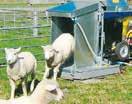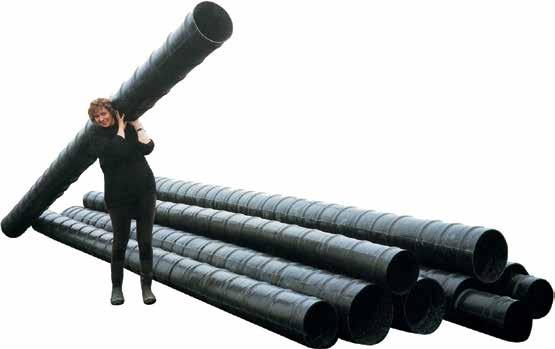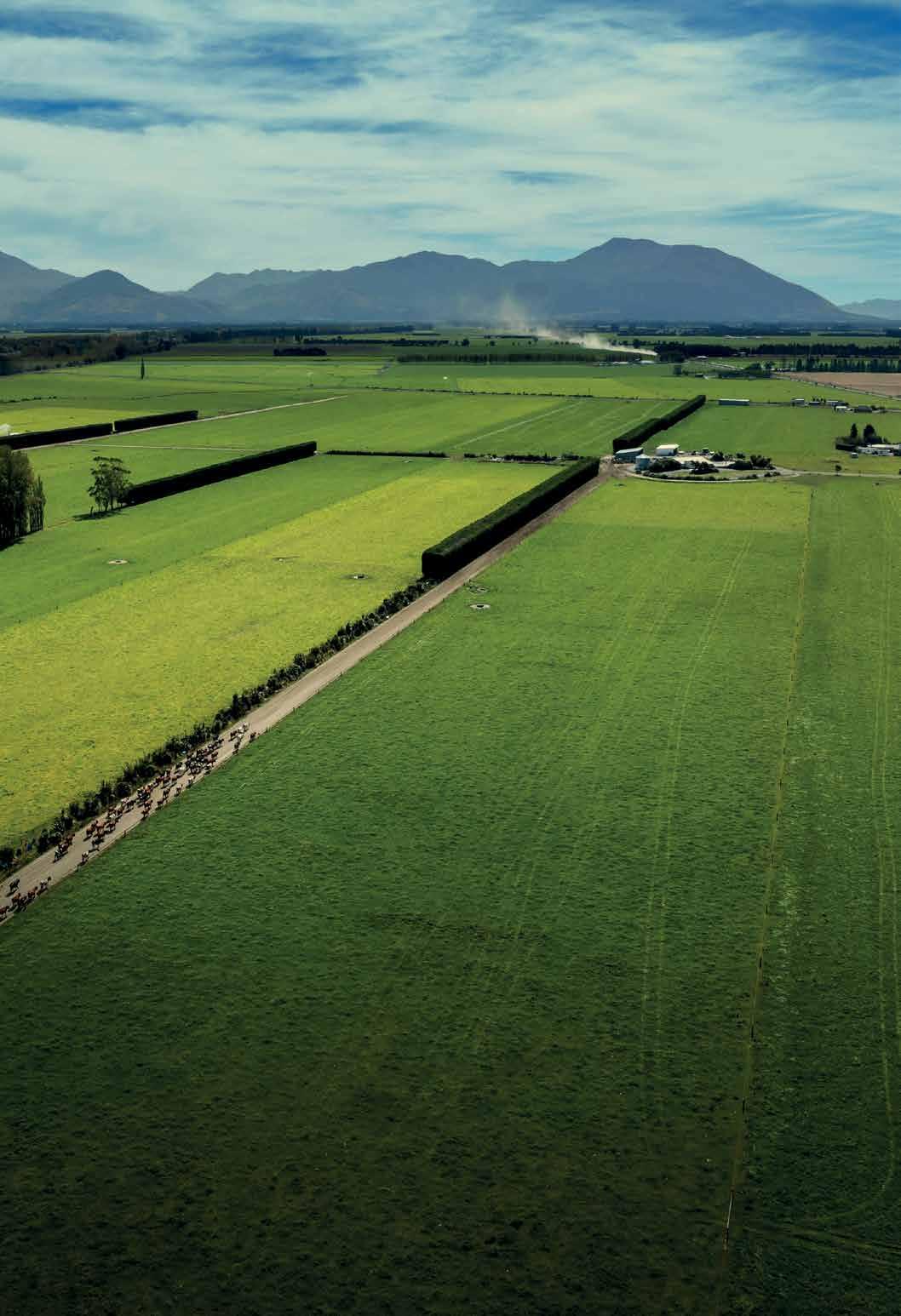






launch at China International Import Expo in Shanghai on November 5.
Meat Industry Association chair
THE RED meat sector is launching a new campaign to lure Chinese consumers to New Zealand grass-fed beef and lamb.
The multi-million-dollar, three-year campaign aims to bolster export earnings for processors and much-needed farmgate returns.
New Zealand red meat processors and exporters have taken the reins of Taste Pure Nature (TPN) from Beef + Lamb NZ ahead of the campaign
This year’s William Gearish Memorial Award – part of Massey University’s agriculture, horticulture and environmental science awards was handed to Yuen An. She received the award from Professor Nicola Shadbolt at a gala dinner in Palmerston North recently attended by more than 200 students, staff and primary industry leaders. An is based on a sheep station in Tasmania and flew over to collect her award. Story: p 8
Nathan Guy says that it’s important to reconnect and reaffirm in the Chinese market, which is now more competitive than ever.
He notes that NZ established diplomatic relations with China 52 years ago and became the first country to secure a free trade deal. However, things have changed.
“There’s a lot more competition and while we had first mover advantage, now we have 42 countries com-
peting with us in China,” Guy told Rural News
“Competition is fierce, and we need to do things differently.”
Guy points out grain-fed beef and lamb are attracting a premium price in China. Consumers don’t know the full benefits of grass-fed beef and lamb.
“Our animals are fed outdoors on grass all year, they are hormone-free and grass-fed meat have many nutritional benefits over grain-fed meat,” he says.
“We need to get on the front foot and get this message across to Chinese
consumers.”
The campaign has unanimous backing of the MIA council and major processors – Alliance, Silver Fern Farms, Affco, Anzco and Greenlea Meats – are on board. Marketing managers of processing companies will drive the campaign. MIA and B+LNZ are forking out $2m each and the sector is confident of securing extra funding from the Sustainable Farming Fund (SFF).
New Zealand is the second largest source of lamb for Chinese consumers, behind Australia. When it comes to beef, NZ is the sixth largest source


with Brazil the largest source.
Guy says NZ products are sold to 75 million Chinese consumers.
“If we target 100 million of the wealthiest Chinese consumers, the value will be significantly deeper and flow back to processors, and more importantly, to farmers,” he says.
Working alongside New Zealand red meat exporters, the Taste Pure Nature campaign will feature integrated marketing programmes that include digital and social media marketing, media and influencer relations, events and advertising.
Guy acknowledged the significant work and investment B+LNZ has made in promoting the sustainability of New Zealand grass-fed beef and lamb to target groups of international consumers. B+LNZ chair Kate Acland says it was fitting the next phase of Taste Pure Nature would be launched in Shanghai.
“As a sector, our future depends on driving greater value and securing higher premiums for our products.
“The Taste Pure Nature programme has demonstrated the power of our farmers’ story and the impact that can be achieved through targeted investment in global markets. Given the current market challenges, it’s more critical than ever to keep investing in marketing.
“B+LNZ’s Taste Pure Nature campaign was designed to lay a strong foundation that meat processors and exporters could build upon for their international marketing effort and we’re confident the companies will continue the programme’s success and take it to the next level.”

EDNA 12
12
15
HEALTH 16
AND PRODUCTS 17-18 RURAL TRADER 19
SUDESH KISSUN sudeshk@ruralnews.co.nz
CANTERBURY MILK processor Synlait says some farmer suppliers have been inquiring about the process to remove their cessation notices, handed in earlier this year.
This follows Synlait lifting its 202425 season forecast milk price by 40c to $9/kgMS, the second highest milk price on record.
The listed company, now majority-owned by China’s Bright Dairy, is battling to retain its 200 farmer suppliers in Canterbury following two years of poor performance and losses. Last month, the company approved a recapitalisation plan to meet debt commitments and improve its balance sheet.
HEAD OFFICE
Lower Ground Floor, 29 Northcroft Street, Takapuna, Auckland 0622
Phone: 09-307 0399
Fax: 09-307 0122
POSTAL ADDRESS
PO Box 331100, Takapuna, Auckland 0740
Published by: Rural News Group
Printed by: Inkwise NZ Ltd
CONTACTS
Editorial: editor@ruralnews.co.nz
Advertising material: davef@ruralnews.co.nz
Rural News online: www.ruralnews.co.nz
Subscriptions: subsrndn@ruralnews.co.nz
Earlier this year, the majority of Synlait farmer suppliers handed in cessation notices, which take effect in two years. Cessations received in the immediately preceding year, up to the May 31 2024 cut-off date, would affect milk supply from 2026 onward if they are not withdrawn.

Synlait director on-farm excellence, Charles Fergusson, says farmers are happy with the $9 forecast milk price and the step up in advance rates during winter months.
“Definitely, there’s been a significant change in the mood of our farmers. Last April-May, they were doing it really tough, but the lift in our forecast milk price and advance rate is a
big step forward.
“We’ve had enquiries from some farmer suppliers who want to understand the process of removing the cessation notices,” he told Rural News
Fergusson says he will be holding meetings with farmers this month.
Synlait’s 200 farmer suppliers are based in Canterbury where milk production has been strong. The company also has 55 suppliers in the North Island; their milk is processed by Open Country Dairy.
Fergusson says the strong milk flows, along with easing cost pressures and the recent drop in the official cash rate (OCR) will help lift the financial performance of its farmer suppliers.
He says Synlait remains committed to delivering a competitive milk price, advanced rates and to ensure its onfarm offering remains highly attractive.
Fergusson says it’s rare for processors to forecast a $9 milk price in midOctober. He points out that demand from China seems to be coming back and while milk flow in NZ is strong, global supply isn’t improving.
IN ANOTHER sign of improving agribusiness sentiment, two listed companies have lifted their forecast earnings for the year.
Fruit grower and trader Seeka expects forecast full year earnings guidance at a profit before tax level of between $21 million and $25m. The forecast range compares to a loss of $21m last year.
Rural trader PGG Wrightson is forecasting earnings before interest, taxes, depreciation, and amortisation (EBITDA) of $51m for year ending June 2025, compared to $44m
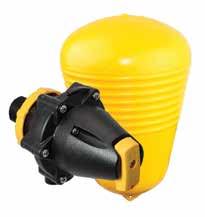


last year.
The company says that while sheep farmers are facing challenging market conditions with soft returns, there are however some positive indicators suggesting the start of a turnaround, including good quality yields in the horticulture sector.
Seeka, a major player in the hort sector, attributes its improved forecast to a clear strategy, excellent fruit quality and performance, efficiencies and margins across the business. The turnaround has prompted Seeka to declare a dividend of 10c/share to be

paid on January 25, 2025.
Seeka chief executive Michael Franks notes that a full year dividend is normally paid in April.
This year the full year dividend has been varied to provide a quicker restoration of dividends and provide an earlier return on investment to Seeka’s shareholders, he says.
Franks says the company has achieved a good year.
Over at PGW, chair Garry Moore notes that the rural servicing market in New Zealand remains relatively challenged.
“Geopolitical tensions are contributing to cautiousness in the market and a slower than expected recovery in New Zealand’s key export market. China continues to dampen commodity prices,” he adds.
Sheep farmers are facing challenging market conditions with soft returns. Flock numbers are estimated to have reduced by 4.3%, down to 23.3 million, However, he notes confidence returning to the dairy sector with Fonterra and other processors forecasting a milk price of $9/kgMS for the season. – Sudesh Kissun




A GROUP of volunteers from Lincoln University known as the ‘Handy Landies’ is among those descending on Otago to help farmers get their properties back to normal.
Dr John Roche, the Director of Ministry for Primary Industries (MPI)’s ‘On Farm Support’ team, says the cleanup in Otago has begun.
Community and sector groups, including the Rural Support Trust and his own team, are working closely together to get a clear understanding of farmers’ needs, to make sure they get the help and support they need.
He says the volunteer groups will be helping farmers clear and repair fences and clear riparian areas to make sure these
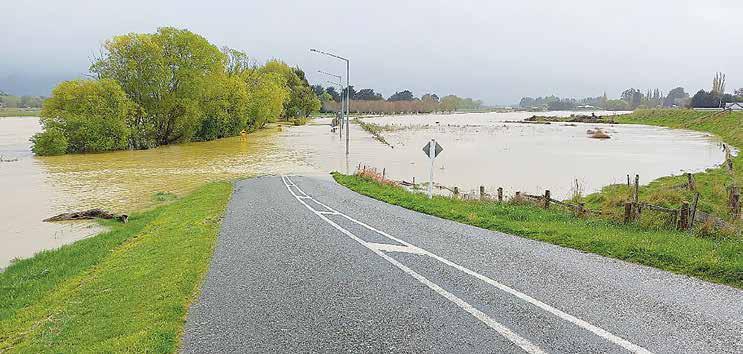
are not lost.
“The locals have been told to keep an eye on the Facebook pages to find out where the working bees are being held so that they can get along and help out as well,”
Roche told Rural News
A LOT depends on what happens in the next few months. That’s the view of Federated Farmers Otago president, Luke Kane.
He says a lot of the supplementary feed in the province has been used up but a few recent days of sunshine have offered some hope with feed utilisation improving.
“One this that’s become apparent is that the arable guys have had a lot of rot in their crops.
Roche says there’s been a concerted effort by MPI and the all the groups involved to contact farmers. He says his organisation has proactively contacted more than 140 farmers. He says they are monitoring
That has delayed planting for the next round, so that means we may not see some of the effects of this for six months,” he says.
Kane, a dairy farmer whose family has family has farmed in the region for over 100 years, says events like this are not uncommon, especially on the Taieri Plains, which is a flood scheme designed to take the pressure off the wider community.
He says the floodwaters
the feed supply situation and adds that Federated Farmers is doing a good job in this area.
In Southland, the situation is very different to the floods in Otago.
Roche says Southland got twice the average rainfall
are now starting to recede but remain on certain farms and may take time to disappear.
“Farmers in this area know they could be feeding out supplement for months because it will take time for them re-grass sodden paddocks,” he says.
Kane says the problem for Otago farmers was the prolonged nature of the event which saw soil moisture levels rise and no sun to dry out the paddocks.
for September and that came on top of already sodden pastures. He says pasture growth is slow and fewer supplements are available, right when dairy farmers are moving into mating their cows.
“Many are concerned
THE CHAIR of the Otago Rural Support Trust, Tom Pinckney, says he believes that they will be especially busy in the coming months as the enormity of the floods hit home.
He says the goal of the trust right now is to ensure that no farmers in need are overlooked. He says MPI is doing a needs assessment, but the trust, along with other agencies, is using its respective networks to double check that
at the long-term implications of the weather, including the condition of cows at this time of the year,” he says.
Roche says in Otago it’s been a hard season with the province going from a long dry spell
all those who need help will get it.
“The trust has had some, but not a lot of, direct requests for help, but this isn’t surprising, with farmers focused on their immediate need to clear and repair fences and in some cases tracks on their properties,” he says.
Pinckney says farmers will also have to re-grass damaged pastures and assess stock losses. He says some farmers
to persistent rain. He says the key thing from now on is to get farmers together to talk through their individual situation and not stay stuck on their properties worrying.
He says all the community and sector groups are doing a great job running events and doing their best to support farmers and their families.
“With the rain still coming, that doesn’t help, and I know from my own experience there is nothing worse than constantly putting on your wet weather gear in the middle of October.
“It’s not good for morale or mental health and so the most important thing now is that people look after each other. Summer will come,” he says.
@rural_news
facebook.com/ruralnews
in the worst hit areas may have lost between 10-15% of their lambs.
He says once farmers get their places back to normal and have time to assess what they are faced with, the issue of mental health will start to come to the fore.
He says that’s why the trust is expecting the impacts of the floods to play out for some time with all sorts of pressures going on farmers.
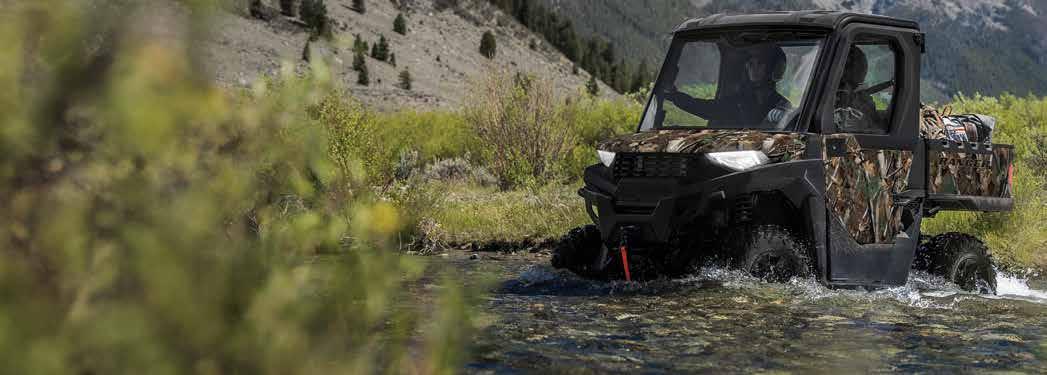
ist restaurant of the year in the Cuisine Good Food Awards.
FARMERS FACING economic challenges can look within their farmgate for extra income.
That’s the advice from King Country farmer Dan Steele, who has been running Blue Duck Station farm as a diversified farming business for 20 years.
The 3000ha station runs livestock across twothirds of the property: breeding ewes, breeding cows and a small deer herd for its hunting business. The rest of the station has a variety of lodges. Activities offered to guests include horse riding, jet boating, kayaking, bush safari and mountain biking.
Blue Duck Station’s fine dining restaurant, The Chef’s Table, recently won the special-

Steele says the past 20 years has been “an absolutely great journey”.
“It has been very challenging at times; bumping into rules, regulations and naysayers. But we have learnt so many new skills along the way, like marketing, social media, high-end hospitality and cuisine,” he told Rural News.
“It took some time to learn balance and the importance of family, health and well-being.”
For Steele, diversification sprung out of an absolute love for the place and wanting to share the beauty, history and stories with people.
“Having travelled the world as a young Kiwi bloke I realised how much we had to showcase and how special the

New Zealand story is.
“This farm is heartland, much of which should never have been cut out of bush, and we felt a responsibility to transition it back to its natural state. This worked into the tourism idea well.
“Adding diversification to your business
can really help build up a great network of people around you. Especially with agri-tourism bringing so many interesting people into your world every week.”
Steele acknowledges that many red meat farmers are struggling with lower income over the years. He suggests look-
ing at other options for income on farm.
“Some are struggling and can’t see the light at the end of the tunnel. I’d suggest they reach out for help in many ways. Firstly, they are, by far, not alone in this complicated world; there are many others going through what they are.
“The Rural Support Trust is a great starting place. Get some advice, discuss ideas with anyone that is available. Go back to your values and why you are where you are and doing what you are doing.”
Steele believes the Emissions Trading Scheme “is easy money for anyone with more than a few acres”.
“There are a few who could benefit from retiring their worst land into this golden goose of native bush and open it up to the public for walking, camping, put a small cottage or hut on. “
He notes that it’s a privilege to be guardians of the land as farmers are.
“And while it is tough now, it’s about opening one’s perspective and looking at the beauty and the opportunity right there on your property.
“Be creative, be brave, and get started now. What you have is precious and can offer so many diverse options for income. It does not have to be a quick and easy route through genetic modification (GM) or fast-track development. A more careful, thoughtful, respectful, long-term approach, sustainable, high-value approach can also yield great returns.”
Steele says opening the award-wining restaurant was about “value add”.
He says it’s humbling to be recognised as New Zealand Specialist Restaurant Of The Year and awarded two hats. “Awards are great, but they won’t take our focus off our road to sustainability, profitability and a meaningful life in the back country.”

CLIMATE CHANGE
and its effects was the number one item on the agenda of the annual International Kiwifruit conference held this year in Greece.
Colin Bond, chief executive of NZ kiwifruit Growers organisation (NZKGI), told Rural News that climate change is providing ongoing challenges for kiwifruit growers through the world.
He says, for example, the US had its hottest July since 2000, that in Greece the temperature in summer was two degrees hotter than normal and there were a range of extreme events including floods in Europe.
“These events, includ-

ing those in NZ, are making life in horticulture extremely difficult.
For example, in Chile they talk quite openly that their kiwifruit growing regions are progressively moving south,” he says.
Bond says in NZ’s case, Cyclone Gabrielle was the biggest event and we are in a similar posi-
tion to other countries; NZ has a broad range of growing regions and so, if needed, there will be options to grow in other cooler regions. It is also known that research is being done to breed new varieties of kiwifruit which are less affected by warmer temperatures.
But like many other primary sectors in
NZ, the trend towards warmer temperatures means that new risks will emerge from pests and disease.
Bond says cold winters are important to kill pests that can’t survive the cold.
“The big thing that did come out of the conference is that NZ is still recognised as a global
MASSEY UNIVERSITY is tweaking the format of its agricultural courses.
The university’s deputy head of the school of agriculture and environment, Professor Danny Donaghy, says they are making sure there are more courses around compliance, greenhouse gases, animal welfare and other key topics. But he says that if new material is added in, some must
be removed, because the degrees are for just three years.
“What we are trying to do is give graduates a good appreciation of the systems that they work within and to be able to navigate these.
Not necessarily to have the answers to everything, but we are trying to train them as to where to look for the answers rather than just
BESIDES GOING to the international conference in Greece, where he also looked at plantings of kiwifruit, Colin Bond spent time at ports in Spain and Belgium to see the state of NZ kiwifruit arriving in European markets.
He says the quality of the fruit he saw in the market was excellent.
He says with the NZ kiwifruit harvest over, it’s now up to Zespri to sell the remaining fruit while growers are busy preparing for next season. He says the 2024 harvest was one of our best despite problems in isolated areas.
“So, after a couple of challenging years we have had a very good season and importantly we have had a long period of chill this winter, so we are hopeful that 2025 will be equally successful, but plenty of water still has to go under the bridge,” he says.
Bond says average returns for this year have been very good, in contrast to last year when many growers suffered
leader in the kiwifruit sector. The Zespri model is doing a huge amount
filling up their heads with facts and figures,” he says.
Donaghy says in the age of online, so much more information is freely available, compared with several years ago. He says they are trying to up-skill students about how and where to look for information.
“And to know good information from bullshit and to be able to navi-
from a late frost, which meant volumes were down. What he’s hearing from growers is that in 2024 their volumes are getting back to normal. Certainly, Zespri is indicating strong prices in market.
“So whilst it may not be a record season for growers, they will certainly be in the top quartile and that will be welcome relief after a couple of tough years,” he says.
Success cannot be taken for granted, says Bond, and he notes that what has been achieved is due to a huge amount of excellent work by people right along the supply chain. He says while some growers are still recovering from the bad times, overall the industry has a lot of positives to reflect on – especially the very strong demand in market for kiwifruit.
And just a reminder that next week in the Bay of Plenty, the kiwifruit sector will be celebrating this success and some of the historic milestones in its evolution.
for the category overall globally and we are looked to as the experts in growing and the experts around biosecurity as well,” he says.
gate their way through that,” he says.
Donaghy says he agrees with the report of AgFirst chief executive James Allen on the skills that will be required for future rural professionals. He says understanding farm systems is key – as is having the people skills to meet the demands of clients and deliver this in a way they require.
Finally, Donaghy says he never


ceases to be amazed at the high calibre of the Massey ag graduates.
He says their commitment to their studies is great to see and it’s no surprise how well Massey is respected in the agriculture and environment space.
• More on Massey ag science graduation on p 8.
– Peter Burke
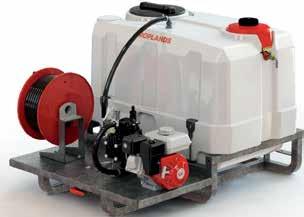

THEN
Successful forage brassica and pasture production is highly dependent on the first six weeks of a plant’s life. Ultrastrike® and Superstrike® seed treatments include insecticides, fungicides and nutrients to maximise seedling establishment, helping to deliver higher yields and improved animal production. For more information, talk to your local seed retailer or visit seedtreatment.co.nz PROTECT YOUR SEED, PROTECT YOUR FUTURE.
SHE CAME all the way from a sheep station in Tasmania especially to be presented with the top prize in this year’s Massey University agriculture, horticulture and environmental science awards.
Yeun An won the prestigious William Gearish Memorial Award. It was presented to her by Professor Nicola Shadbolt at a gala dinner in Palmerston North attended by more than 200 Massey students, staff and primary industry leaders.
Auckland-born An was two years into a chemical engineering degree
at Auckland University when she worked on a dairy farm during the summer break.
“I suddenly got hooked and realised that agriculture was from me, so changed my study path and came to Massey,” she says.
Two years into her degree at Massey she got offered a role as a shepherd on sheep station in Tasmania and completed her final degree year by distance. She’s also worked on a cattle station and, after receiving her prize, is flying back to her job in Tasmania. Her parents were from Korea, but she was born in NZ. Long term she hopes to get a job in the trade

policy area.
Another Aucklander, Katya de Silva, won the top prize for excellence in agriculture. She says although a city girl,
she loves the outdoors and when at school she picked up on the fact that people had a poor understanding of the primary sector and what farm-
ers do.
“People don’t realise the challenges that farmers face navigating issues such as climate change and environment,” she says.
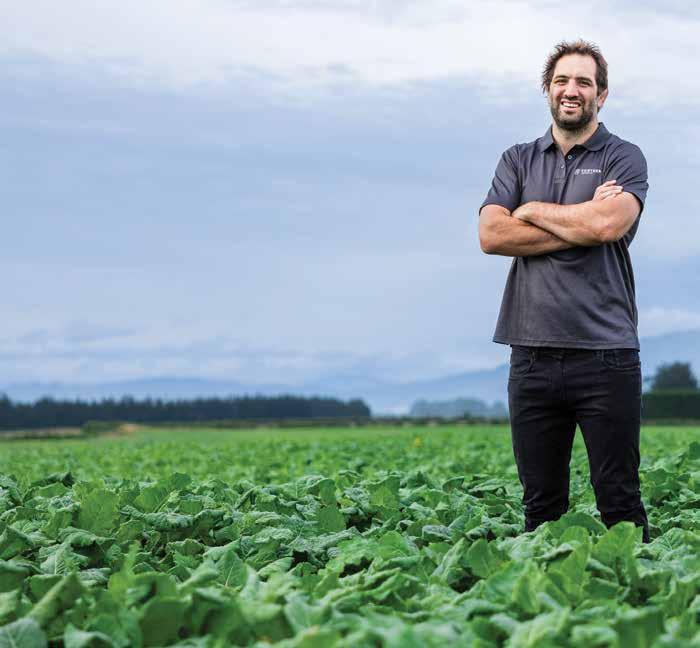
While doing her degree, de Silva has been able to get out on farms and meet people and says in the long term she’d like to work in the environment area to try and help farmers work though the many issues they face. However, in the coming year she’ll be working for Te Tumu Paeroa, the Maori Trustee, as a whenua services co-ordinator.
Massey’s top horticulture student Brooke Challis was another student who just fell in love with the primary sector. She was doing a zoology degree, but after working part time on an apple orchard in Hast-
ings in 2021/22, decided to change and went on to do a degree in horticulture. Challis says while at secondary school at Taradale, little if any mention was made about the career opportunities in agriculture and especially horticulture.
“People don’t see it as a viable career option and don’t see the opportunities that are there. You can do lots of things within the sector such as marketing, innovation, business and science,” she says.
Challis says she plans to continue working in the orchard until next season’s harvest and then may look for a research opportunity.
Our portfolio of powerful, proven products has helped farmers from one end of the country to the other create and maintain thriving businesses, and has earned us a reputation as New Zealand’s brassica protection specialists. Visit corteva.co.nz to view our range of online brassica resources.
WHILE UNRECORDED
in New Zealand, Bluetongue, an acute viral disease in ruminants, is endemic in tropical and sub-tropical climates.
Experts suggest that climate change could increase the distribution of the disease, which should cause some concern as our closest neighbour with the problem is Australia.
Currently in Northern Europe, an area that could hardly be described as sub-tropical, there have been over 4000 cases reported in the last two months in Belgium, the Netherlands and Germany. Since late August, the problem has moved over the English Channel to the UK, likely via midges that have been carried from the European continent.
Bluetongue is a notifiable disease in the UK, and the Department for Environment, Food and Rural Affairs (DEFRA) has declared restricted movement orders in infected areas that encompass much of eastern and southern England, in regions including East Riding of Yorkshire, Lincolnshire,
Cambridgeshire, Bedfordshire, Hertfordshire, Greater London, Surrey, East Sussex and parts of Hampshire, with around 140 cases reported to date.
Typically spread by some species of biting midges, movement of infected animals, blood, ova and embryos, infected pregnant animals can also transmit to their young. In sheep, where there appears to be greater reports of infection, typical symptoms are ulcers or sores in the mouth or on the nose, discharges from the eyes or nose and drooling.
This progresses to swelling of the lips, tongue, head and neck, alongside red staining of the skin caused by blood collecting beneath the surface. As the virus progresses, animals develop a fever, lameness, breathing issues – further compounded by abortion, foetal deformities, stillbirths and ultimately, death. Lambs born alive, with typically be weak, deformed or blind and unlikely to survive for more than a few days.
In cattle, typical symptoms include lethargy, crusty lesions around the nostrils and muzzle, redness of the mouth,
eyes and nose, alongside redness of the skin above the hoof, with redness and erosion of the teats. This is followed by fever, milk yield reduction, loss of appetite and like affected sheep, abortions, foetal deformities and stillbirths. Cattle may be infectious for several weeks, without showing
any outward signs of the disease and interestingly are usually the preferred host of the biting midges. Prevention should be centred around responsible sales and movement of livestock, taking care to identify any early signs of infection before selling animals. Experts suggest that if possible, it would

be helpful to reduce exposure of animals to the risk of biting midges at dawn or dusk. In the same vein, hygiene and biosecurity needs to hold to high standards, ensuring farm or wild animals or carrion do not have any access to aborted or infected materials or afterbirths.


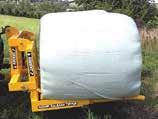





Take the risk out of your pasture renewal – and get the best returns – by sowing a proven, quality product from Barenbrug. Ask your reseller, or learn more at barenbrug.co.nz/cheaper-isn-t-better

Supercharged with NEA12, Shogun is the pace-setter in 1-3 year pasture. Shogun NEA12
The phenomenal 3-5 year pasture, delivering performance your neighbours will envy. Forge NEA 1-3 years 3-5 years
Next generation perennial, our ‘go to’ grass for superior persistence & summer growth. Maxsyn NEA4 Perennial
The superstar perennial, delivering high intake, yield, N uptake & persistence. Array NEA2 Perennial
The benchmark in tetraploid perennials, it’s easy grazing & better for the environment. 4front NEA2
Concern about fatigue impacts during a busy season prompted Rural Contractors New Zealand to launch a campaign about the risks. Chief executive Andrew Olsen explains.
EVERY JOB has it pressures but rural contractors work to weather windows and crop constraints, driving big machinery, so they can be particularly vulnerable to fatigue.
Rural Contractors NZ takes health & safety seriously. We had three separate presentations to our June conference about protecting our members’ physical and mental health as well as that of their staff.
Now we are running a campaign to reduce the risk of fatigue this season.
This will feature an industry veteran and former RCNZ president Steve Murray is doing
some short videos which spell out that avoiding fatigue risks requires everyone to do their bit.
Under health and safety laws, every employer must take ‘all reasonably practicable steps’ to prevent their workers being harmed. This means taking a systematic approach to identify, assess and control risks at work including fatigue and stress.
These can, of course, arise at home or at work but either way employers need to be alert to whether staff are able to work without putting themselves or workmates at risk. We suggest making fatigue a regu-
lar conversation with workers and encouraging them to talk if they at risk. Breaks also need to be built into oftenbusy schedules, and if anyone is showing signs of fatigue, stand them down.
Skilled machinery operators remain hard to find but we say to members that, if they can, roster on extra staff during busy times and rotate them around the machines and tasks. Sometimes it might mean not being able to do a job. Those running rural contracting businesses can work such long hours themselves, trying to cover gaps, that they fall

victim to the very risk they are trying to avoid with their staff.
We are also saying that as an employee, you

need to play your part in ensuring the safety of yourself and your workmates. That includes getting as much quality sleep
as possible and not getting on the turps ahead of a big day’s work.
If you think a workmate is fatigued, you
need to ensure someone is alerted as they could be a risk to you and others.
Of course, landowners also have a role to play. Rural contractors can sometimes be put under too much pressure to meet impossible deadlines.
Just be aware that while a rural contractor wants to do their best for you, they share the same lack of control of the weather or crop cycles.
And the last thing anyone wants is for a fatigued driver to do harm to themselves or someone else.
There are risks for everyone if you push yourself or others too hard.
Let’s all work for a safe season by avoiding fatigue.
@rural_news

IRATE SOUTHLAND farmers are on the money denying anglers access across their land.
And social media posts show there’s growing support to spread the boycott throughout the country. That’s exactly what happened in 2014 with the ‘Lock the Gate’ campaign kicked off by Rural News
For too long, Fish & Game has been using membership fees, collected from the public and farmers, to fund court battles to unfairly suppress farming.
It’s clear that farmers strongly back the Southland Federated Farmers’ call for local farmers to boycott Fish & Game and remove fishing access across their land. The call to action was sparked by a court decision which would require 3000 Southland farmers to apply for resource consent to keep farming lawfully. Southland Fish & Game and Forest & Bird have been pushing for the ruling. They’ve welcomed the decision, saying it would help the province’s degraded rivers and waterways.
As Feds Southland president Jason Herrick says, Fish & Game has failed to reciprocate the goodwill shown by farmers in allowing anglers to walk across their land.
“We’re fed up with Southland Fish & Game’s persistent, belligerent anti-farming rhetoric and their opposition to everything we do. We’ve tried our best to maintain our relationship with them, but they’ve washed that relationship away down the Mataura River,” Herrick says.
Farmers are being urged to take down access signs on the properties. Feds are making it clear that farmers shouldn’t destroy access signs put up by F&G. Instead, the signs can be returned to Fish & Game.
Some farmers are calling for the Feds to consider a national boycott, noting that, if successful in Southland, Fish & Game will be advocating similar regulations throughout the country.
For now, Federated Farmers Southland is appreciative of the nationwide support and is asking supporters to put orange on roadside gates to show support, wherever you are in the country.
The time has come to stop Fish & Game in its tracks. Farmers have been allowing access to anglers in good faith, only to be kicked in the guts time and again by Fish & Game.
HEAD OFFICE POSTAL ADDRESS:
PO Box 331100, Takapuna, Auckland 0740
Phone 09-307 0399
PUBLISHER: Brian Hight Ph 09 307 0399
GENERAL MANAGER: Adam Fricker Ph 021-842 226
EDITOR: Sudesh Kissun Ph 021-963 177 sudeshk@ruralnews.co.nz

BIG SURPRISE, Fish & Game find themselves at odds with farmers, once again, and at risk of costing their members the one thing they value above all else – access across private land to fishable lakes and rivers. Following a court decision requiring Southland farmers to gain resource consent to farm lawfully, Southland Fed Farmers have called for locals to boycott F&G and deny anglers access across their land. This old mutt’s been around long enough to remember the last time F&G’s attacks on farmers reached a head; in 2014 farmers right across NZ joined Rural News’ ‘Lock the Gate!’ campaign to deny F&G members access to their land. Then, as now, F&G whined that it was ‘unfair’, but then, as now, they found out what happened when you push farmers too far – access denied!!

IN A throwback to the 1990s, our old mates at Greenpeace continued their crusade against affordable food by abseiling down the side of Fonterra’s Te Rapa factory and unfurling a big banner. It was all very 1990s and brought back memories of Xena, Princess Warrior. This old mutt reckons it also smacks of the privileged, self-righteousness infecting western society these days, where chardonnay socialists, fattened up on organic eggs and salmon bagels with almond milk flat whites, try and prevent the production of affordable food for the world’s hungry masses because they’ve watched too many Netflix ‘documentaries’ about how ‘the planet is burning’. These woke idiots, fat and happy in their leafy suburbs, don’t know what it’s like to struggle to afford food, let alone get up early every day to grow it.
PRODUCTION: David Ferguson Ph 027 272 5372 davef@ruralnews.co.nz
Becky Williams Ph 021 100 4381 beckyw@ruralnews.co.nz
REPORTERS: Peter Burke Ph 021 224 2184 peterb@ruralnews.co.nz
Nigel Malthus Ph 021-164 4258
MACHINERY EDITOR: Mark Daniel Ph 021 906 723 markd@ruralnews.co.nz
WHILE THE Government’s Fast Track bill is copping it from all the usual suspects – opposition parties, greenies, unions and various other ‘interested parties’ who cream it in fees by forcing development through endless ‘consultation’ – your old mate reckons progress on key elements like housing, infrastructure, mining & quarrying, and aquaculture & farming are long overdue and critical in stopping the rot in little old Enzed. However, it’s a tad disappointing to see that, of the 149 projects on their Fast Track priority list, only seven were for ‘aquaculture & farming’ and all of those were for aquaculture. The 17 or so wind and solar ‘farms’ don’t really count. Sure, all industries, and therefore the country, will benefit from better roads, rail and port facilities, but it’d be nice to see some ag projects included on that list.
Want to share your opinion or gossip with the Hound? Send your emails to: hound@ruralnews.co.nz
THE RESERVE Bank’s rate cut is great news, albeit a bit late, but your old mate agrees with Act leader David Seymour that the cut – with more to come – is a “multi-billion dollar mea culpa” by the RBNZ. It bookends a series of excesses, says Seymour. The too-easy money of Covid times spiked house prices and inflation. Then, interest rates shot up, house prices crashed back down. “Interest rates were also driven up by Labour’s Covid spending blowout. Households responded by making spending sacrifices –and changing the Government.” No time for Seymour and his coalition cohorts to rest on their laurels though – they need to keep cutting the waste and red tape from Wellington and fast tracking the infrastructure we need to avoid falling further towards third world status.
AUCKLAND SALES CONTACT: Stephen Pollard Ph 021 963 166 stephenp@ruralnews.co.nz
WAIKATO & WELLINGTON SALES
CONTACT: Lisa Wise Ph 027 369 9218 lisaw@ruralnews.co.nz
SOUTH ISLAND SALES CONTACT: Kaye Sutherland Ph 021 221 1994 kayes@ruralnews.co.nz
DIGITAL STRATEGIST: Jessica Marshall Ph 021 0232 6446


CLICKING THROUGH some news of late, I have noted the odd headline referring to credit card debt.
Headlines like this do pique my interest somewhat, as I have three cards myself. Three may not sound like many to some people, but the truth is, one is enough to easily get you into rather deep yoghurt!
Looking into this a little deeper, I learned that for the second quarter of 2024, the US carried a credit card debt of US$1.142 trillion! As I don’t have enough zeroes on my calculator to figure that out for a per person amount, I think I’ll let that one pass!
How is it here in New Zealand, I wondered? The best figure I could come up with was for the beginning of ’24. Apparently, we had a mere $6.2 billion outstanding on plastic.
I have to admit I have always thought of the term “Credit Card” to be a classic example of the noun misnomer. When you stop for a bit and think it through, it is simply another easy way to get yourself into debt.
I have had my card truly in credit a few times simply by paying, let’s say, ten dollars more than the total outstanding. So yes, next month’s statement informs me I am now $10.00 in credit. Now that’s the real thing too, not a misnomer.
Just last week I read an interesting article concerning a lady helping people get their budgets sorted. She gave some timely advice, like one piece in particular I recall: “Cut up your credit cards. You don’t need them.” Hmmm.
Now, when you find yourself barely making the monthly payments, as I have from time to time, you find out very quickly who really is in charge. The interest getting added on to your account rapidly eats away any benefits you thought you were getting from buying your item “on sale”!

It’s the same with mortgages too.
If you start missing some repayments, you will soon find out who is really the boss. And when the interest rates jump up, try pushing back with that, and you’ll soon see who is in charge.
A brief quote from the Good Book here will not go amiss: “…and the borrower is servant to the lender”. How true!
Having had both credit cards and mortgages, both personal and commercial, here is my 50 cents worth of wisdom. Your debt can be manageable and serve you, or you can be a servant, a slave even, to your debt. It is never a good thing when a bank is your master and rules your life, day and night.
To illustrate, for our mortgages, both personal and commercial, we always met the repayments each month. They served us in reaching goals of property ownership.
We never had to work extra jobs, forfeit family holidays, time out, or felt robbed of the spontaneity of life.
However, our story may well be very different to yours.
When you find yourself caught in the position of being a slave to your debt, it is usually your health and/or close relationships that will pay the price. And we start withdrawing ourselves and neglecting the very people who have been good friends in the past. Rocky road stuff, for sure! Personally, I think that price is just too high. I don’t want to go there. I would attempt to restructure or let something less important go.
Colin: farmerschaplain@ ruralnews.co.nz

costs can be eased for rural ratepayers.
LOCAL GOVERNMENT
is badly underfunded.
Economic circumstances demand a new approach to funding the constant burden of infrastructure delivery and renewal. The
We need a new financial maturity using our local authorities’ ability to engage in the market by identifying sound investment in co-ownership and partnership
profit-making initiatives that serve ratepayers.
The global industrial hemp market will grow from $4.6 billion in 2019 to $30 billion and more in a few years, with a projected compound growth rate of almost 20%. New
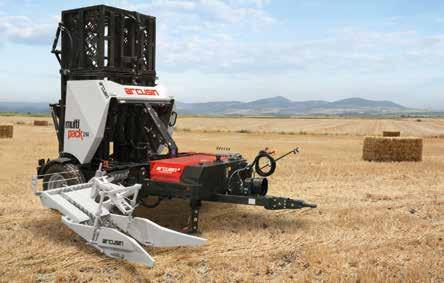
SIDE PICK UP! D14 Multipack
& handling conventional
Zealand is not exporting hemp products yet, but we have an environment and agricultural system suited to largescale hemp cultivation to deliver large returns to the regions.
Far beyond canna-


Bred for high performance and ‘cast iron’ constitution
We deliberately challenge our Romneys by farming them on unfertilised native hill country in order to provide the maximum selection pressure and expose ‘soft’ sheep.

GROWTH RATE & SURVIVAL
Over the last 20 years ewes (including 2ths) have scanned between 185% and 210% despite droughts.
Over the same period weaning weights (adj. 100 days) have exceeded 36kg from a lambing % consistently above 150%.
• All sheep DNA and SIL recorded.
• Ram hoggets have been eye muscle scanned since 1996. IMF scanned since 2023.
• Ewe hoggets have been mated (to Romney sires) for over 20 years.
• Breeding programme puts an emphasis on worm resilience - lambs drenched only once prior to autumn. FE tolerance introduced more recently.
• Scored for dags and feet shape. Sires DNA rated for footrot and cold tolerance.
• We are ‘hands on’ breeders with a focus on detail and quality.
• We take an uncompromising approach - sheep must constantly measure up.
We aim to breed superior Romneys that produce the most from the least input.

Glenview Romneys & South Suffolks
GEOFF & BARB CROKER Longbush, RD 4, Masterton
email: bob_barb@slingshot.co.nz • Ph: 06-372 7820 www.glenviewromneys.co.nz

binols and hemp seed, hemp is a superplant in its entirety, serving mankind for thousands of years.
Demonised in the 1930s through a deliberate and false drug connection stigma, industrial hemp was forced off the table for more than 80 years by chemical giants who feared its competition with the nylon and Teflon compounds they were producing.
By pushing the ‘evil drug’ lie the potential in high value and biodegradable hemp was never developed. Unbridled, the chemical companies choked the globe with plastics and blew the ozone to pieces.
Incredibly, the shadow of this folly resides in our laws today.
Hemp delivers fibre, textiles, food, oils, seeds, organic cellulose, ethanol, green biofuels, green bioplastics, animal feed, even high-protein vegan meat and nutritional supplements. Hemp stores far more carbon than pine. There is no forest ‘slash’ mess to clean up. Its uses range from building products to foods, medicines and cosmetics, to absorbing and removing toxins from soils (bioremediation).

Looking at one hemp product, hemp concrete, or ‘hempcrete’ gives a glimpse of the potential of this product. Hempcrete is a bio- composite alternative to concrete for construction and insulation.
Hempcrete is ‘carbon-negative’ or ‘better-than-zero-carbon’
because the hemp plant absorbs more carbon from the air during growth than it yields during its production. It continues to absorb carbon after being used in construction, storing more carbon over the building’s lifetime than was emitted during construction.
Grown from October to January, hemp is a perfect rotational crop for dairy, beef and sheep farms, with no change to existing land use.
Hemp is low in water use and needs similar fertiliser to maize. It smothers weeds after a few weeks’ growth and does not need pesticides.
Hemp grown for fibre alone will return at least $2000 per hectare.
Higher value hemp seed, oils and animal feed can be produced from the same crop. Exporting the fibre is one option, and processing products here would show a far better return as the international demand steadily grows.
Each region in New Zealand could develop different products or combine to produce a lower number of ‘best return’ products.
Local authorities could partner with farmers and landowners, with the council’s profits used to subsidise rates.
Using local government could also help target the best scale, or capacity, for the hemp industry here.
The cost to set up processing is quite high. Establishing processing would be as much as
$10 million depending on the product. The investment could replicate the best examples across the world where industrial hemp is already established.
Look at one district. South Wairarapa has 70,000 hectares in dairying, beef and sheep. In a crop rotation with existing farm practices many thousands of hectares could be in high-profit hemp production, contributing to the regional economy, infrastructure and well-being, and significantly easing the $30 million South Wairarapa rates burden on ratepayers.
There is a fitting provenance to fibre production. In 1793, in the hands of Māori, high quality rope and twine made from harakeke (flax fibre) was New Zealand’s first export, and the great Prime Minister Michael Joseph Savage worked in the biggest flax mill in the country at Manawatu. Government is rightly sceptical of unfounded data, and farmers are conservative in adopting new crops. Hemp research is credible, concise, and backed by scientific evidence.
In her definitive study ‘New Zealand’s Industrial Hemp Industry’ Otago University’s Polly Brownlee spoke of the creative innovation and collaboration needed to realise hemp’s enormous potential.
The first spade in the ground needs to be visionary leadership.
• Geoff Vause is a journalist based in Featherston
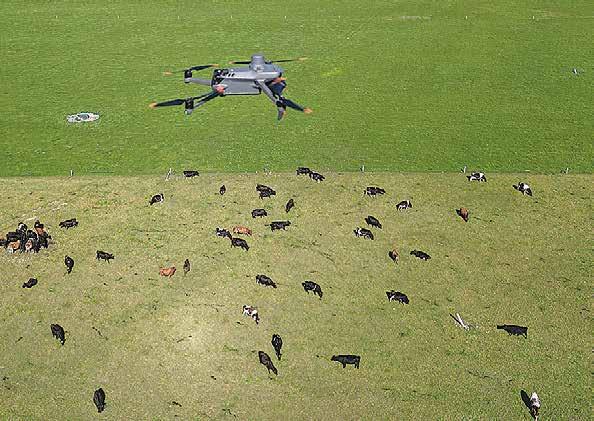

PGG WRIGHTSON has launched a new stock-counting service using drones and Artificial Intelligence (AI), which it says removes all the hassle for farmers, while achieving 99.9% accuracy.
The company says it is a worldbeating innovation with the potential to completely transform the way farmers around the world tackle livestock audits.
The trademarked SkyCount solution uses Microsoft Azure and Power Apps to reduce what’s typically a week-long manual labour for multiple people to a brief operation with just one drone operator, and without the need to physically move the animals or disrupt normal farming routines.
It works by videoing the farm by drone, at an altitude that does not disturb the animals, before analysis by an AI engine trained to differentiate between various animals and other objects. The company says it typically returns 97% accuracy on the first sweep, rising to 99.9% once a reviewer has gone over objects flagged as queries.
Stephen Guerin, PPG Wrightson chief executive, said the company was “very excited” by the new system.
PPG Wrightson does “quite a few” stock audits every year, often for farms being prepared for sale or for corporate farmers who need independent verification for their audits, but the company hopes the system will put independent stock
counts in reach of smaller farmers as well.
Guerin said a normal manual stock count might commit a couple of PGG Wrightson team members, but then have to be postponed by weather or other unforeseen cir-
cumstances.
“Then you overlay the operational impact for our farmer clients. They have to allocate staff, they have to move animals.
“Whereas this could do all that without those farming interruptions. What might take, on some farms, two days can be over and done with in three or four hours, without having to move animals or take staff away from other jobs,” said Guerin.
The software has been developed by Inde, a Christchurch-based independent IT consultancy which has been a technology partner with PGG Wrightson for about seven years, assisting with various digital needs. SkyCount is their first joint
AI venture.
Inde co-founder and chief technology officer Rik Roberts says a count starts with the operator mapping the client farm and its paddock boundaries and programming the drone’s flight route. The count then takes “basically as long as it takes the drone to fly over the client farm.” It then takes “about a minute” to process the video, then there is a validation step before producing the final report.
Roberts says the AI might encounter a rock that looks like an animal, or misses an animal due to it being partially obscured, but the operator can feed those instances back to the AI to continually improve the model.
“We’ve developed something that is self-contained, that can be run offline, that can be run by a single PGG Wrightson rep in the field without being an IT expert.”
Guerin says the project started in December 2022 and took about 12 months to work through the model verification. They tried heat sensing cameras before settling on high-definition visible-light cameras.
“Heat struggles when you think about a paddock in Central Otago - a rock can be the size of a sheep pretty easily.”
Guerin says that Microsoft, whose AI “sits behind” the platform, says SkyCount is the most advanced application of its type they have seen.
Launched at the 2024 Mystery Creek Fieldays, the service is already available throughout the country.
IN THE late 1980s, planes flying from South America to New Zealand carried some unusual and precious travellers, tucked away in the business-class drinks cabinet, of all places.
These tiny passengers were wasp eggs and larvae sitting inside weevils, which upon arrival in New Zealand would become soldiers in a war against entrenched agricultural pests that has saved the country hundreds of millions of dollars.
The importation of these South American ‘parasitoid wasps’ was under the direction of pioneering AgResearch scientist Stephen Goldson and colleagues.
Looking back, the now-emeritus scientist
WITH
says the unusual method of transporting the wasps was just one bizarre component of an unlikely scientific success story.
“We couldn’t send the wasps themselves because they’re far too delicate and don’t live very long,” Goldson explains.
“So, we sent over thousands of these weevils infected with wasp eggs. We put them into boxes, and we put ‘important’ labels all over each of them, saying ‘don’t open this box’. I mean, they could have been full of cocaine, but it was a gentler age then, right?
The problem was that we couldn’t put them in the aircraft hold because we were flying over the Antarctic, and they’d freeze. So, Aerolíneas
pathogenic avian influenza (HPAI) making headlines around the world, the Department of Conservation (DoC) is taking steps to secure the safety of several endangered bird species that call New Zealand home.
DoC has collaborated with global animal health company Zoetis and Pacificvet, supplier of vaccines and veterinary immunology products to the poultry industries in New Zealand and the South Pacific.
This world first comprehensive multi-species avian wildlife HPAI

Argentinas was employing a flight attendant who was a friend of our group, and she undertook to bring this stuff over in the drinks’ cabinet, which was at a nice eight degrees Celsius. We introduced thousands of wasps into New Zealand like that.”
vaccination safety and efficacy trial is based upon a previous collaboration among Zoetis, the United States Department of Agriculture Animal and Plant Health Inspection Service (USDA APHIS) and the United States Fish & Wildlife Service to help protect the endangered California condors. New Zealand has never had HPAI.
The Ministry for Primary Industries granted approval for the Poulvac Flufend RG A9733 vaccine from Zoetis, which is not commercially available in New Zealand, to be used in a controlled trial to test its safety
Upon arrival, the infected weevils went into quarantine, then into cages where researchers waited for the wasp pupae to “drop out” of the weevils and become early generations of the parasitoid wasp released in New Zealand.
“Up to that time, I had
never seen the wasp. I had only seen the larvae. It was a bit like seeing your first-born — it was very exciting. We spent the thick end of a million dollars showing that the wasp was pretty reliably attacking the Argentine stem weevil, and not attacking much in the
and efficacy in a select number of endangered birds.
DoC has worked with Pacificvet to trial the vaccine’s use in five species – shore plover, red-crowed parakeet (as a surrogate for orange-fronted parakeet), black stilt and kakapo. The trial began in January 2024 and vaccinations were completed for all five species in May 2024. These species are listed as endangered or critically endangered on the International Union for Conservation of Nature Red List of Threatened Species and are reliant on captive breeding for

way of ‘non-target’ weevils.”
Goldson and fellow researchers were working on an educated hunch that the introduced wasps would be effective in New Zealand’s pasture environment.
The pest weevil had earlier been (accidentally) introduced and as a consequence, was thriving without natural enemies. The wasp works by laying eggs in the weevil, making it unable to reproduce and killing the weevil as the egg hatches and wasp larvae emerges.
“Catching these things in South America wasn’t easy. And some of these places weren’t particularly stable, politically. I turned up in Buenos Aires and Sao Paulo with a butterfly net and a prac-
species’ survival. It is not possible to vaccinate all endangered native birds, but it may provide an effective tool to protect species in captivity where the full two doses of vaccine can be given.
The aim of the trial is to assess the safety and efficacy of the vaccine in the five species. The birds are being monitored, and none have shown any adverse reactions to the vaccine. All five species have shown a positive antibody response to vaccination, and will be tested again shortly to measure the duration of that immunity.
Once the trial is completed, there
tically useless phrasebook, and I had no idea where to go. I was being pulled in by various levels of authority asking what the hell was I doing.”
To determine which weevil populations had the wasp eggs in them, Goldson set up makeshift stations on “rickety tables” with a microscope and lights in his hotel rooms, to perform weevil dissections.
“Owners of the hotels were dubious and usually thought that I was doing something illegal; drugs or something.”
Goldson says the enormous success of imported wasps in controlling populations of Argentine, lucerne and clover root weevils in New Zealand was a “1000 to one chance”.
will be evidence to show how well the vaccine works and how much protection it might provide to these species. Vaccination would then only be used after HPAI has arrived in New Zealand, to ensure the protection is recent and strong.
“Zoetis has a long history of supporting veterinarians working to protect wildlife and endangered species, and through our CTED, we are combating diseases that pose the greatest risk to animals and humans,” said Vanessa Macdonald, general manager for Zoetis New Zealand.

LANDPOWER AND the Claas Harvest Centre network will launch the Claas Scorpion and Torion material handling solutions to the market in October, in a move to offer greater choice for farmers and contractors looking for the right fit for their operation.
“We have had a relationship with Claas spanning over 40 years, so we are excited to be bringing these machines, not previously sold in New Zealand, to our market to extend our Claas range and offer further choice to our customers for their agricultural machinery requirements,” says chief executive, Richard Wilson.
“We know that we are bringing in equipment

that is right for the farming conditions of our customers because we have already been selling both products in Australia for some time. We have already had considerable
interest in the models in New Zealand and presold two 1033 units into South Canterbury.”
Founder Herby Whyte says, “We continue to provide the best equip-
ment and backup support to our customers, and where we are able to, work with multiple brands to ensure that both Australia and New Zealand have the best
global manufacturers, with the best machinery, that fit our trans-Tasman agricultural conditions.”
The Claas Scorpion telehandler has been developed and manufac-
tured in a collaboration with materials handling specialist Liebherr, to deliver a range that spans six models, offering a maximum reach of 7 to 9 metres and a maximum lift capacity of 3 to 6 tonnes. Initially, the Scorpion 732 and 741 will be offered to the NZ market.
Both are equipped with a Deutz high torque four-cylinder, 136hp engine, delivering maximum torque of 500Nm.
Offering 3.2 and 4.1 tonne lift capacity respectively, both machines lift to 6.93 metres and feature a hydrostatic Variopower transmission, featuring three ranges of 0-15, 0-30 and 0-40km/h, in addition to a creep speed function.
The Claas Torion range of agricultural wheeled loaders cur-
rently spans 11 models and three different series, from which Landpower will initially be introducing the 1913 and 1611 P units.
The 1913, fitted with a 4-cylinder Liebherr engine of 222hp, has extra torque at 1248Nm, and lift capacity required for grain handling or filling larger feeder wagons.
The 1611 P, utilising a Deere Power Systems, 6-cylinder engine of 228hp/ 970Nm, is a medium-sized machine that is more suitable for silage clamps and materials handling.
In operation, when loading heavy weights, the Smart Loading function provides active support by precisely managing the interaction between all functions needed to optimise loading cycles.

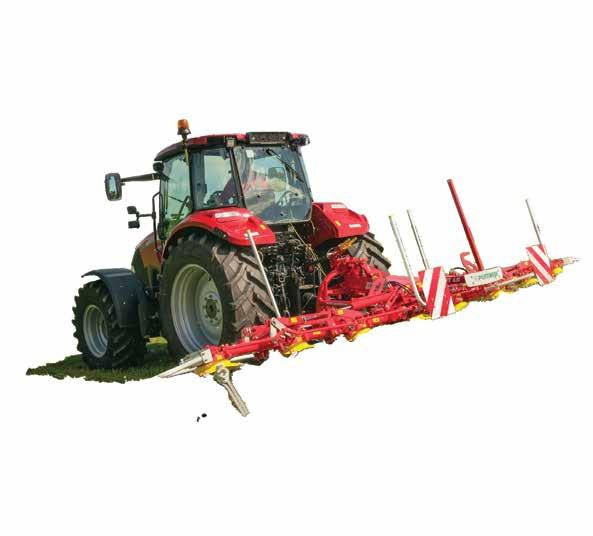
READY TO be unveiled at Italy’s EIMA Show in November, the 2025 Case IH Farmall C models will deliver not only a fresh look, but also enhanced performance and precision farming solutions.
The 24-speed ActiveDrive 2 (Hi-Lo) transmission in all models will ensure smoother shifting and exceptional control, while an increased hydraulic pump capacity of 82 l/min translates into faster loader cycle times. Additionally, the newly introduced ActiveClutch feature allows the tractor to be held on the brake pedal without using the clutch, making it ideal for front loader applications.
From the 90C to the 120C models, a key part of the evolution is a commitment to opera-
tor comfort, but also to making the job easier behind the wheel. A sixpost cab offers superior visibility, while the repositioned exhaust maintains unobstructed views. Driving models fitted with the optional new cab suspension system, will increase comfort levels, while the newly installed LED lights will ensure unobstructed vision during early mornings, late nights, or long road journeys.
An increased diesel capacity of 130 litres allows for longer operation times, while a new tank design provides greater ground clearance.
The modernised digital instrumentation and adaptive lighting in the cab will create an intuitive, high-tech environment.
With optional factoryfitted telematics avail-

able in standard and advanced packages, farmers can now benefit from real-time data driven information, including geo-location, machine monitoring, and wireless


file transfer, whether in the cab or remotely on a mobile device.
Precision is further enhanced with the availability of hydraulic auto guidance, powered by the
Case IH Pro 1200 monitor and Case IH VectorPro receiver, to offer centimetre-level accuracy, even in the most complex field layouts.
Intelligent head-
land management solutions include the Auto PTO feature to automatically engages and disengages during headland turns, making transitions smoother and paired
with the Auto Differential Lock, which disengages the front and rear differentials when the rear lift is raised and re-engages them when lowered, providing seamless operation during headland manoeuvres.
A newly designed front PTO equipped with a wet clutch, offers quieter and more efficient operation, while an increased gross vehicle weight of 7000kg and an upgraded rear lift capacity of 4.7 tonnes mean heavier implements can be utilised, providing greater versatility. Larger rear tires, up to 540/65 R38 improve traction and flotation, helping to minimise soil compaction and enhance yield potential. Further developments across other models in the Farmall C line up will follow in 2025.




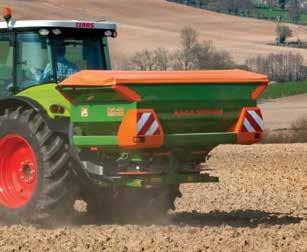
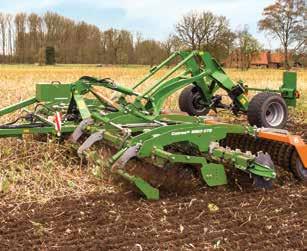

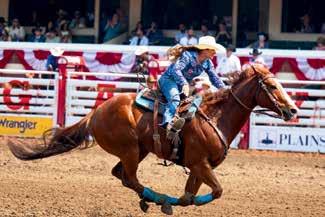

Calgary Stampede
Jul 5th, 2025, 16 Days
Embark on a 16-day adventure through the heart of Canada's stunning landscapes and vibrant culture. Experience the thrill of the Calgary Stampede - world-class rodeo action and the Chuckwagon event.
Indulge in luxury aboard the Rocky Mountaineer Train from Banff to Vancouver, passing through the majestic Continental Divide. Discover the natural




